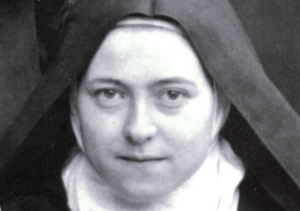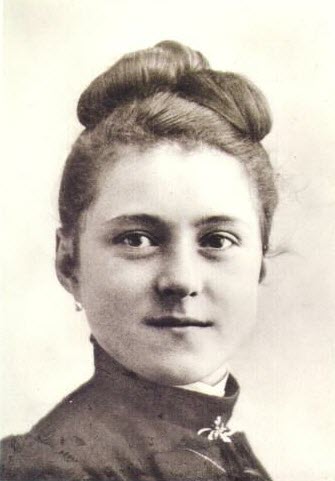A childhood friend
What do these two have in common : Thérèse of the Child Jesus,a young girl of the middle classes who entered Lisieux Carmel at the age of 15 and died in the same Carmel at the age of 24 after living a very simple life, and Fr Marie-Eugene of the Child Jesus, from a humble Aveyron family, who would exercise important responsibilities in the Carmelite Order, travel the world and found the institute of Notre Dame de Vie ? What spiritual inspiration would lead Fr Marie-Eugene to count Thérèse “among the greatest spiritual masters of the Church” ? Why was Thérèse’s sister Mother Agnès able to say, “I never saw a soul as much like my little sister as Fr Marie-Eugene” ?
Henri Grialou knew the figure of Thérèse of the Child Jesus from childhood, when he was in the little seminary. He read La Rose effeuillée (The plucked rose), which he called “a trivial little book”, and would always keep the book with him, even when he went to war (1914–18). “No other book ever made as much impression on me. I can’t find words to express it. It’s admirable !”’ During the military campaigns, Henri experienced the powerful protection of the one he called his “childhood friend”.
Still, it was the marvels that Thérèse works in souls, rather than external miracles, which made an impression on the young priest. When Thérèse was beatified, on 29 April 1923, he confided : “Personally, I feel that this is one of the most beautiful days of my life. I may well have prayed more for the glorification of little sister Thérèse than for any other intention. It seems to me that Thérèse has yet to spread torrents of divine love over the world.”
The way of childhood
 Fr Marie-Eugene was tireless in making known Thérèse’s spiritual teaching in very varied situations : “She is above all for us a spiritual master : humbly but with sureness she has taught us her “little way”, has taught us trust and abandonment, after revealing to us something of what she herself has discovered in the Holy Trinity, namely that fire burning with love which is Love in substance, or the Holy Spirit.”
Fr Marie-Eugene was tireless in making known Thérèse’s spiritual teaching in very varied situations : “She is above all for us a spiritual master : humbly but with sureness she has taught us her “little way”, has taught us trust and abandonment, after revealing to us something of what she herself has discovered in the Holy Trinity, namely that fire burning with love which is Love in substance, or the Holy Spirit.”
What is this “little way” ?
« The weaker one is, without desire or virtue, the more suitable one is for the workings of consuming and transforming love », writes Thérèse.
From this the deep relationship between holiness and a poverty that is totally accepted is apparent : “When the soul is completely poor,” explains Fr Marie-Eugene, “it goes towards God, and God rushes towards it”, laden with the richness of his gifts. “Holiness consists in a state of poverty such that at every moment one is obliged to ask everything of the Holy Spirit.” It’s the attitude of the child who abandons itself, trusting, in the arms of its parents. Thérèse’s little way, also called spiritual childhood, “is not a way reserved for the perfect,” Fr Marie-Eugene makes clear. “The way of childhood is open to all souls.”
A word of God for our time
In one of his lectures, Fr Marie-Eugene addressed Thérèse as follows :
A word for today, and for the whole world !

Thérèse of the Child-Jesus
Let’s listen to Fr Marie-Eugene again :
Thérèse made contact with the love of God by means of prayer, and by prayer she united herself with him and received him in fullness, and Fr Marie-Eugene taught this prayer his whole life long. Through the institute of Notre Dame de Vie he wanted men and women to devote two hours a day to silent prayer, and thus to witness in all social settings to the special love of God for each person.
Just like Thérèse of the Child Jesus, Fr Marie-Eugene had a deep knowledge of the love of God, in particular the merciful and disinterested love which bends down to man, however miserable and wounded he may be, to heal his wounds, comfort him and pick him up again.
The horizon of this love is the Church, the mystical Body of Christ. Thérèse understood this well when she said, “I am a child of the Church.” Following her, Fr Marie-Eugene declared : “There is only one reality which is the aim of our life : God, Jesus Christ, the Church.”


